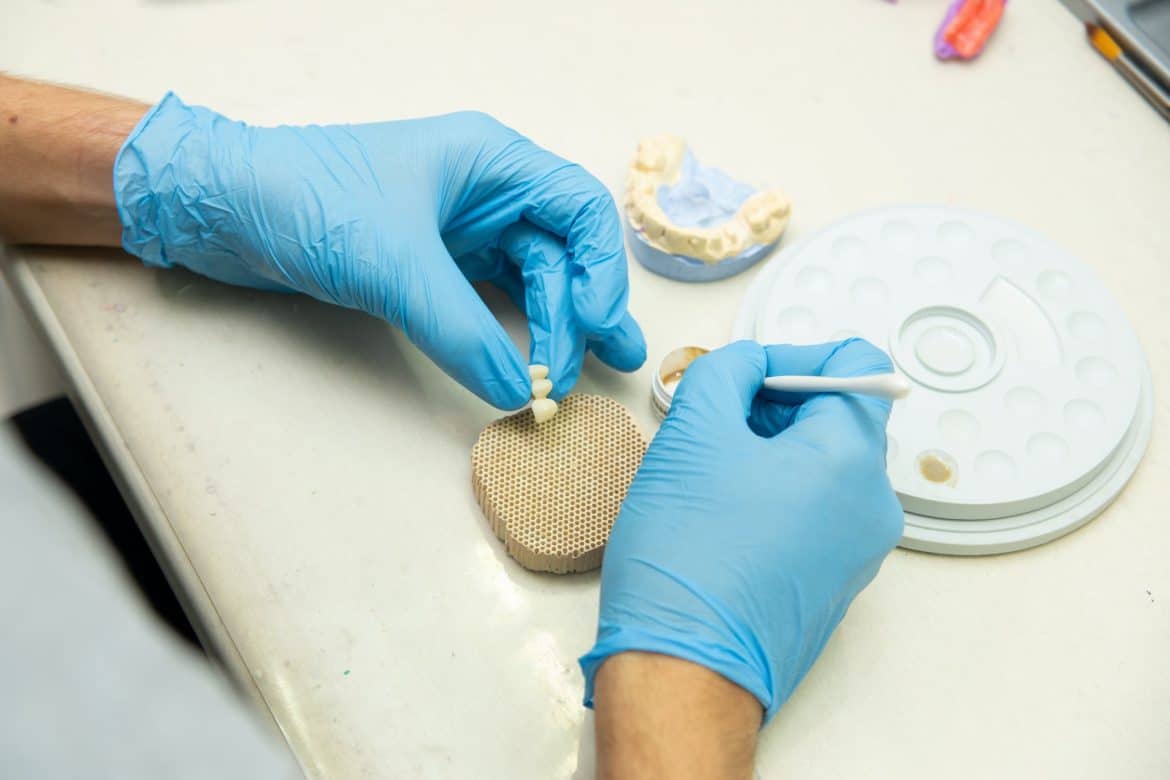SELECT THE WORDS & LEVEL
When it comes to replacing missing teeth, dental implants have revolutionized the field of restorative dentistry. A crucial factor in the success of dental implants is a process called osseointegration. In this blog post, we will delve into the world of osseointegration, explaining what it is, how it works, and why it is vital for the long-term stability and success of dental implants.
What is Osseointegration?
Osseointegration is the biological process by which living bone fuses with an implant surface, creating a strong and stable connection. In the context of dental implants, it refers to the integration of the implant post with the surrounding jawbone. This integration is what allows dental implants to mimic the function and appearance of natural teeth.
The Process of Osseointegration
The process of osseointegration occurs in several stages:
- Implant Placement: During the first stage, a small titanium post is surgically placed into the jawbone. Titanium is used because of its biocompatibility, meaning it is well-tolerated by the body and does not trigger rejection or adverse reactions.
- Healing Phase: After implant placement, a healing period of several months is necessary to allow osseointegration to take place. During this time, the bone cells in the jawbone gradually grow and attach to the surface of the implant.
- Bone Formation: As the bone cells grow, they form a direct union with the implant, creating a solid foundation. This process is facilitated by the special surface characteristics of the implant, which promote bone cell attachment and growth.
- Stability and Integration: Once osseointegration is complete, the implant becomes firmly anchored within the jawbone. It mimics the root of a natural tooth, providing stability and support for the artificial tooth or dental prosthesis that will be attached to it.
Importance of Osseointegration in Dental Implants
Osseointegration plays a crucial role in the success of dental implants for several reasons:
- Stability: The integration of the implant with the jawbone provides a stable foundation for the artificial tooth or dental prosthesis. This stability allows for normal biting and chewing function without slippage or movement.
- Load Distribution: By fusing with the surrounding bone, dental implants distribute the forces generated during biting and chewing more evenly, reducing stress on the implant and the surrounding teeth.
- Longevity: Osseointegrated dental implants have the potential to last for many years, often even a lifetime, with proper care and maintenance. This longevity is due to the strong bond formed between the implant and the jawbone.
- Preservation of Bone: Osseointegration helps prevent bone loss in the jaw. When a tooth is lost, the underlying bone may begin to deteriorate over time. Dental implants stimulate the jawbone, preventing bone resorption and maintaining its density and structure.
- Natural Appearance and Function: Osseointegrated dental implants closely resemble natural teeth in terms of appearance, feel, and function. They allow for confident smiling, speaking, and eating, enhancing overall quality of life.
Find the Best Dentist for Dental Implants
If you’re in San Antonio and considering dental implants, it’s essential to find a highly skilled and experienced dentist. Trusting your oral health to a professional who understands the importance of osseointegration in dental implants can make all the difference in the success of your implant procedure. San Antonio is home to a multitude of well-regarded dental professionals who specialize in restorative dentistry.
They remain updated with the newest technologies and techniques, ensuring a high success rate in dental implant procedures. It’s always wise to consult with a dentist to discuss your unique needs and to better understand the osseointegration process. Choose the right dentist in San Antonio, and start your journey towards a healthier, more confident smile today!
Factors Affecting Osseointegration
While osseointegration is a highly successful process, certain factors can influence its outcome:
- Overall Health: Good general health and oral health contribute to the success of osseointegration. Conditions such as uncontrolled diabetes, smoking, and poor oral hygiene can compromise the healing process.
- Bone Quality and Quantity: Sufficient volume and density of the jawbone are essential for successful osseointegration. In cases where the bone is insufficient, bone grafting or other augmentation procedures may be necessary to ensure adequate support for the implant.
- Implant Design and Surface: The design and surface characteristics of the implant can impact osseointegration. Advances in implant technology have led to the development of surfaces that enhance bone cell attachment and integration.
Osseointegration is a vital process in the success of dental implants. Through the fusion of the implant with the surrounding jawbone, osseointegration provides stability, longevity, and a natural appearance and function. Understanding the importance of osseointegration can help patients appreciate why dental implants are an excellent solution for replacing missing teeth. If you are considering dental implants, consult with a qualified dental professional to determine if you are a suitable candidate for this transformative restorative treatment. Embrace the power of osseointegration and enjoy the benefits of a confident smile and optimal oral health.




